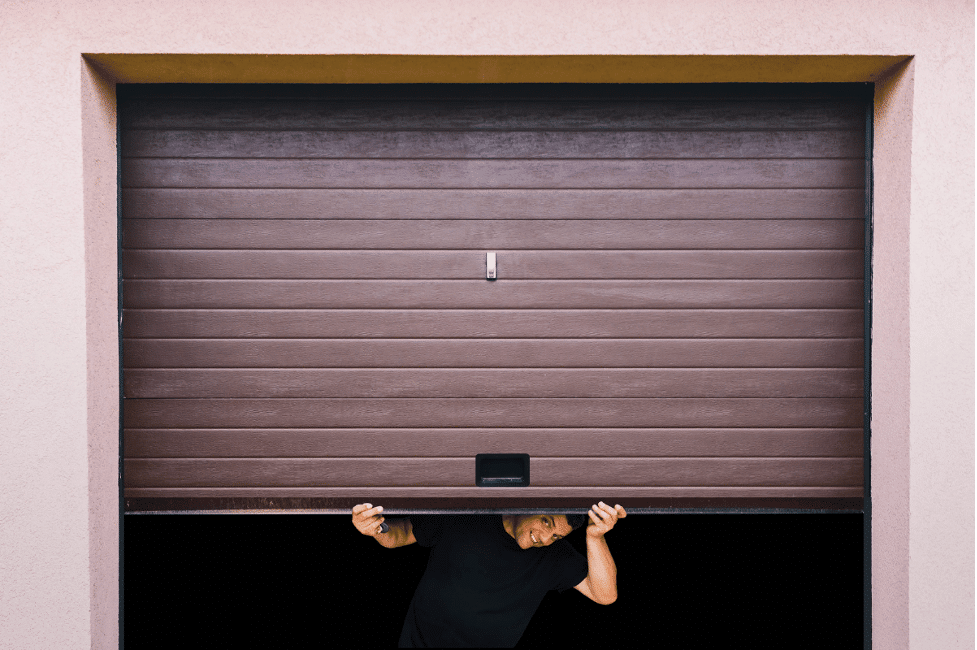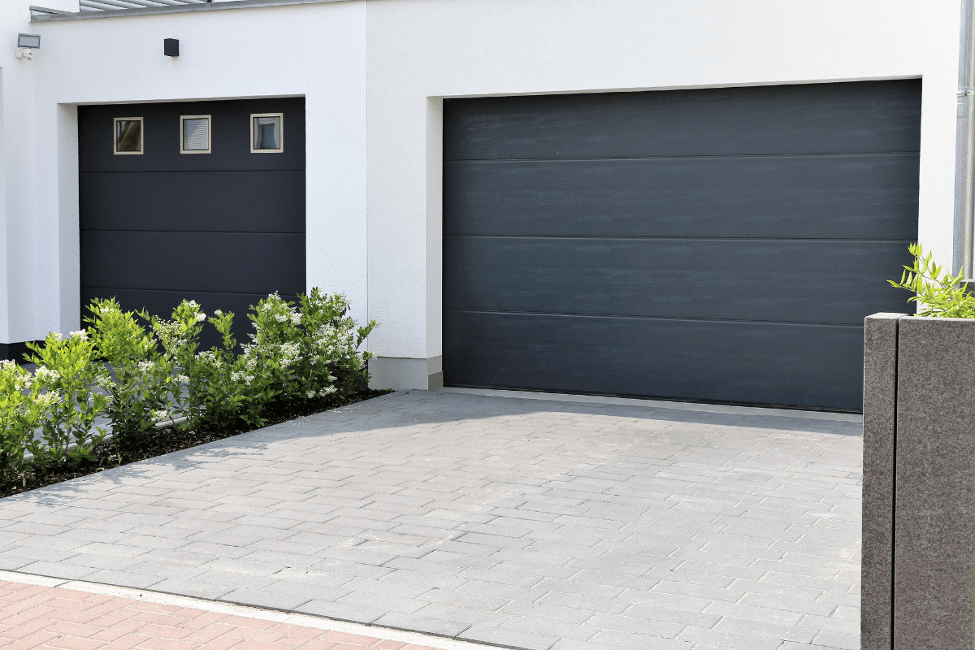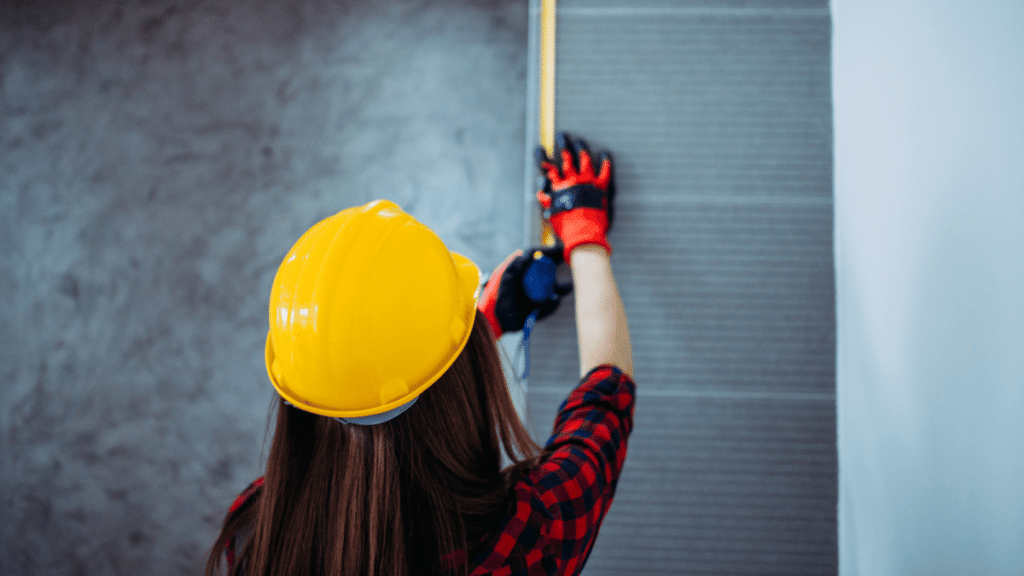So, it’s time for a new garage door! Before you dive into browsing all the fancy styles and materials, it’s crucial to get accurate measurements of your existing garage door opening. This ensures a perfect fit for your new door, preventing installation issues and maximizing functionality. Here’s a step-by-step guide to measuring your garage door opening, complete with a table for standard garage door sizes.
In This Article, you will know:
- The tools that you need for measurement
- Step by step measuring guide
- Standard Garage Door Sizes
- Professional Garage Door Installation
- Factors to consider for choosing the right garage door
- Maintenance tips for newly installed garage doors
Tools You’ll Need:
- Tape Measure
- Step Stool (optional)
Step-by-Step Measuring Guide:
- Measure the Width: Open the garage door completely. Locate the interior opening on either side. This is the space where the new door will sit, excluding any trim or framing. Using your tape measure, extend it from the inside edge of one opening side to the inside edge of the other. Take the measurement at the widest point of the opening.
- Measure the Height: Again, measure from the inside. Extend the tape measure straight up from the garage floor to the inside top edge of the opening (where the header meets the opening).
- Measure the Headroom (Optional): This step is particularly important if you plan on installing a garage door opener. Headroom refers to the clearance between the top of the garage door opening and the ceiling (or any overhead obstruction). Using your tape measure, measure the distance straight up from the top of the door opening to the ceiling. Most garage door openers require a minimum of 12-15 inches of headroom.
- Measure the Sideroom (Optional): This measurement is helpful if you’re considering adding weather stripping or installing a new opener with a jackshaft. Sideroom refers to the space on either side of the opening between the interior wall and the door track. Measure the distance from the interior wall to the closest obstruction on each side (usually the door track). Ideally, you’ll have at least 3-4 inches of space on each side.
Standard Garage Door Sizes:
Here’s a table outlining common standard garage door sizes. Remember, these are general sizes, and it’s always best to take your own measurements for utmost accuracy.
| Door Size | Width (in feet) | Height (in feet) |
| Single Car | 8 | 7 |
| Double Car | 16 | 7 |
| Large Double Car | 18 | 7 |
| Tall Double Car | 16 | 8 |
Pro Tip: For uneven openings or if you suspect any irregularities, take multiple measurements at various points across the opening width and height. Record the smallest measurement to ensure a proper fit.
After You Have Your Measurements:
Once you have your measurements, you’re ready to explore your new garage door options! Knowing the dimensions will help you narrow down the selection process and ensure a smooth installation.

Benefits of Professional Garage Door Installation
While DIY garage door installation might seem tempting, there are significant advantages to entrusting the job to a professional garage door installation company in Queens. Professionals bring expertise, ensuring:
- Safety: Garage doors are heavy and involve complex mechanisms. Improper installation can lead to accidents or injuries. Professionals have the training and experience to handle the job safely.
- Quality Assurance: Professionals use high-quality materials and ensure proper installation techniques, maximizing the lifespan and functionality of your new door.
- Efficiency: With their experience and tools, professionals can install your garage door quickly and efficiently, minimizing disruption to your daily routine.
- Warranty Coverage: Many professional garage door companies offer warranties on both the door itself and the installation, providing peace of mind.
- Compliance: Professionals ensure your new door meets all local building codes and safety regulations.

Factors to Consider for Choosing the Right Garage Door for Your Home
With your measurements in hand, you’re ready to explore the exciting world of garage door options! Consider factors like:
- Material: Steel, wood, fiberglass, and aluminum each offer unique benefits in terms of durability, insulation, and aesthetics.
- Style: From classic raised panels to modern carriage house styles, choose a door that complements your home’s overall design.
- Insulation: An insulated garage door can improve energy efficiency and regulate temperature in your garage.
- Noise Reduction: Look for features that minimize noise transmission, especially if your garage is attached to your living space.
- Window Options: Windows can add natural light and enhance curb appeal, but consider privacy needs if your garage faces the street.

Maintenance Tips for Newly Installed Garage Doors
Now that your new garage door is installed, here are some key maintenance tips to keep it operating smoothly and safely for years to come:
- Be Observant: Pay attention to your garage door during operation. Listen for any unusual noises like grinding, scraping, or banging. Watch for uneven movement or shaking. These could be signs of potential problems.
- Keep it Clean: Regularly wipe down the door with a damp cloth and mild detergent to remove dirt, dust, and cobwebs. Additionally, clear the tracks of any debris that might hinder smooth operation.
- Tighten Up: The constant movement of the door can cause hardware to loosen over time. Inspect and tighten nuts, bolts, and screws periodically. Be cautious not to over-tighten and strip any threads.
- Lubricate It: Friction is the enemy of any moving parts. Use a silicone-based lubricant on rollers, hinges, and other moving components to minimize friction and wear. Avoid using WD-40, as it can attract dirt and grime.
- Safety First: Test the auto-reverse feature of your garage door opener monthly. Place a 2×4 block of wood on the floor in the path of the closing door. The door should automatically reverse when it touches the block. Consult your owner’s manual for specific instructions.
- Weatherproof Seal: The weatherstripping around the door perimeter creates a tight seal to keep out the elements. Inspect the weatherstripping for cracks or tears and replace it if necessary.
Conclusion
Accurate measurements are the foundation of a successful garage door installation. By following this step-by-step guide, you can ensure that your new garage door fits perfectly, functions smoothly, and enhances your home’s curb appeal. While DIY installation might be tempting, the expertise and efficiency of professional garage door installers in Queens can save you time, effort, and potential safety hazards. Choosing the right door and maintaining it properly will ensure longevity and optimal performance.
For professional assistance, consider reaching out to Mr. Garage Door Repairman. They offer expert installation and maintenance services to keep your garage door in top condition. Contact them at 347-371-4449 or visit their website at mrgaragedoorrepairman.com for more information. Embrace the process with confidence, knowing that your new garage door will serve you well for years to come.
